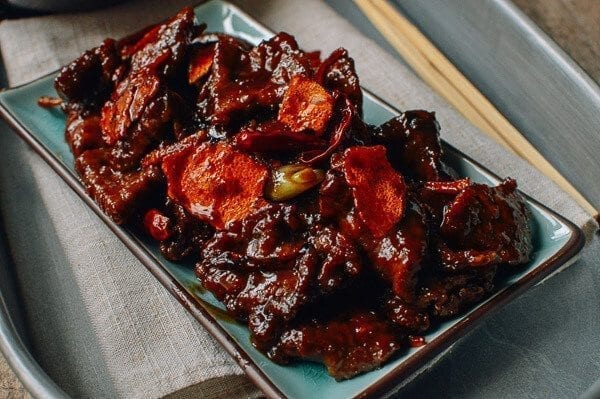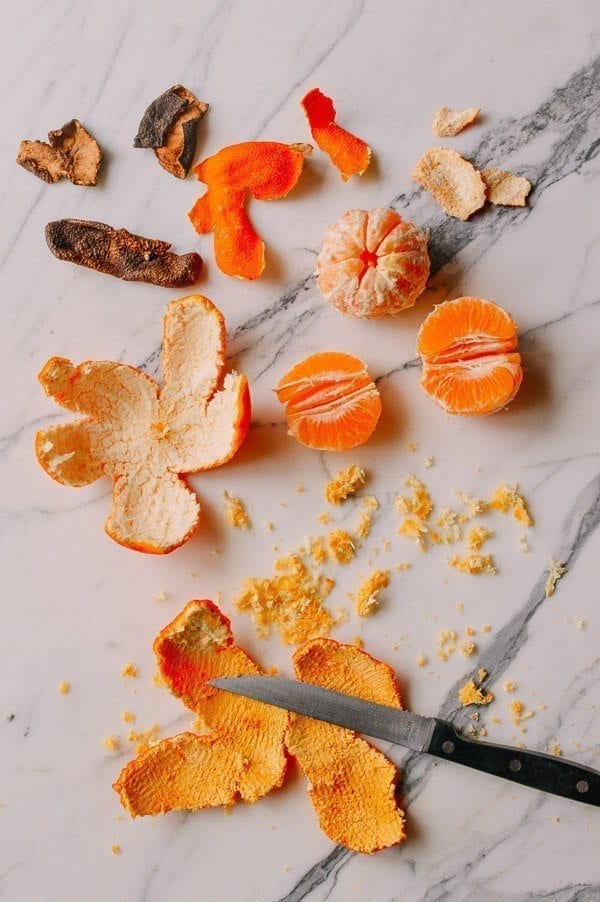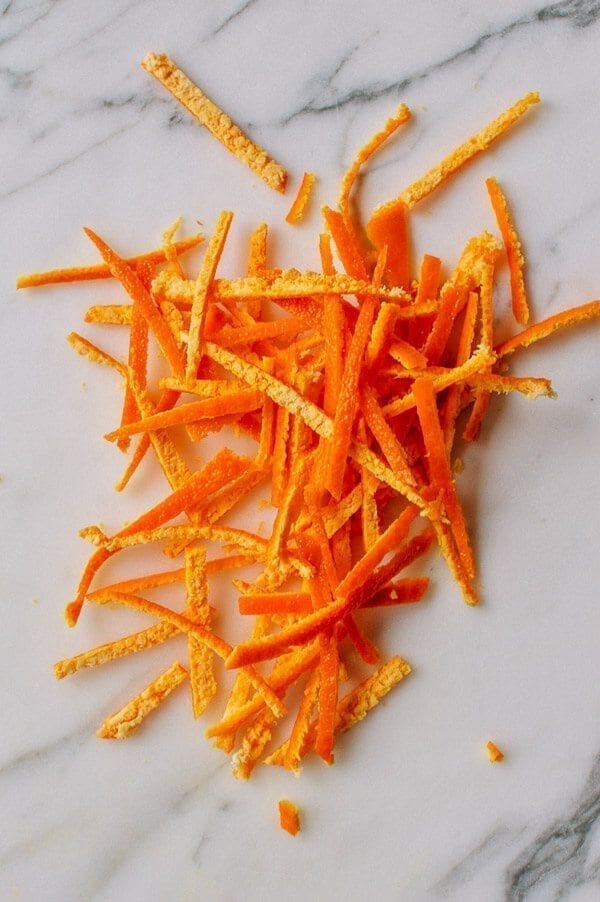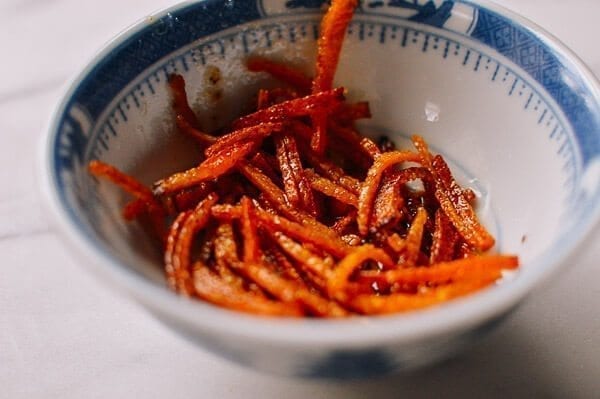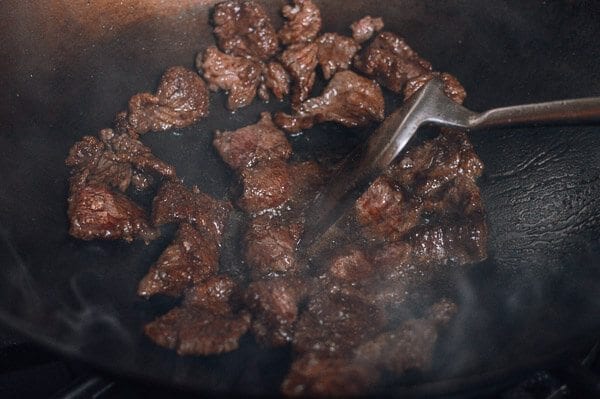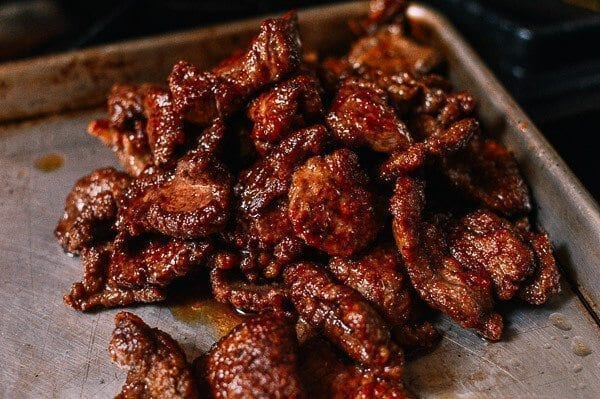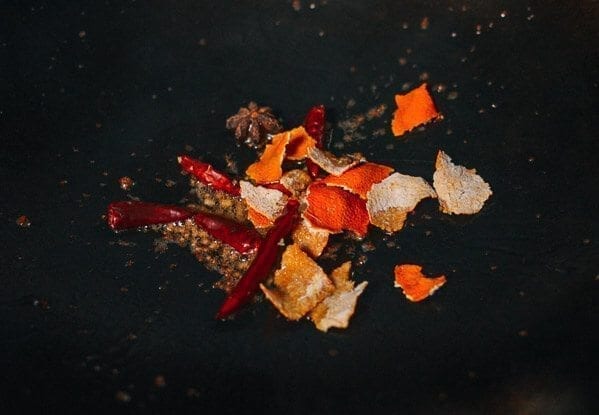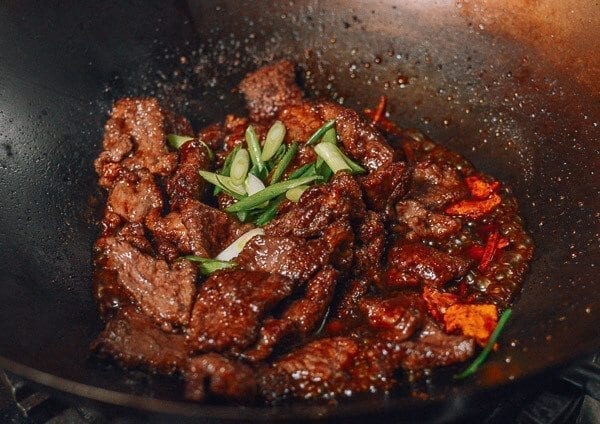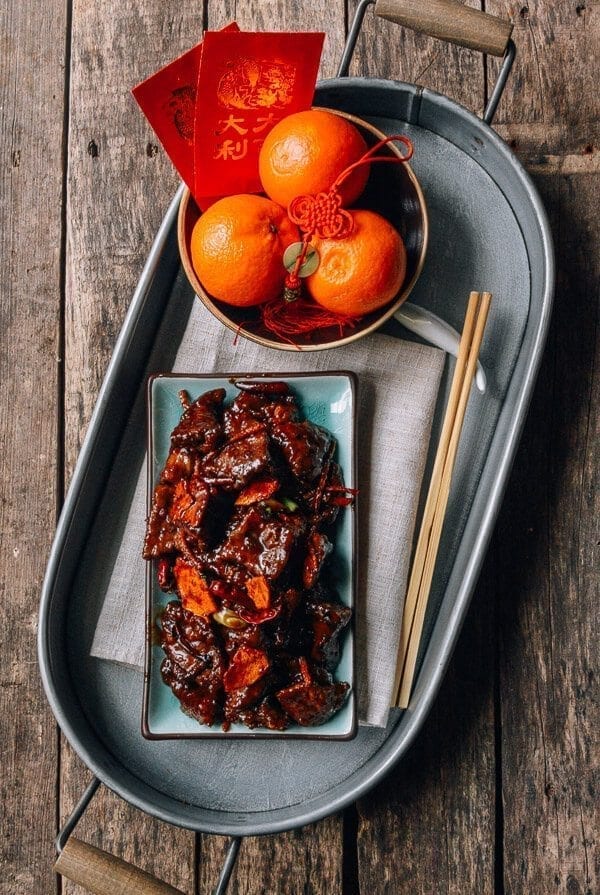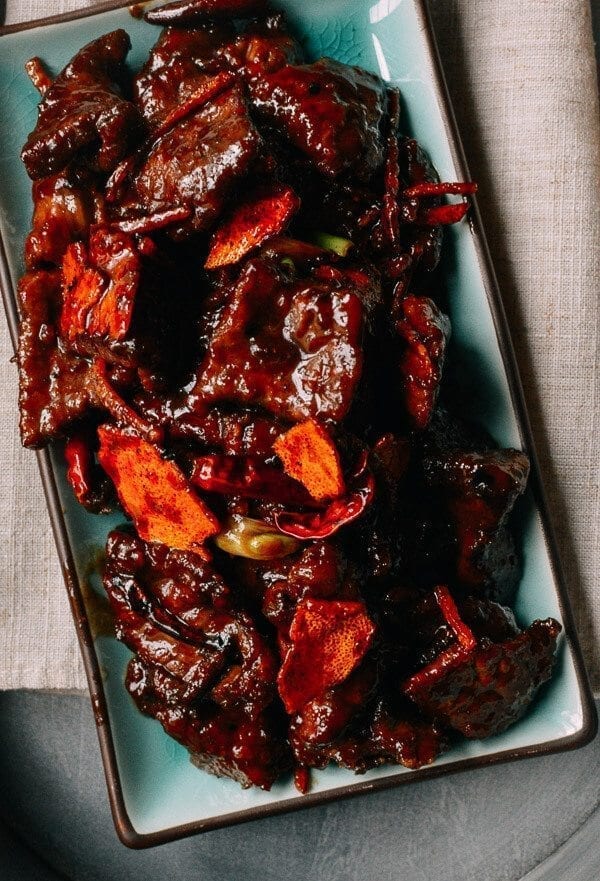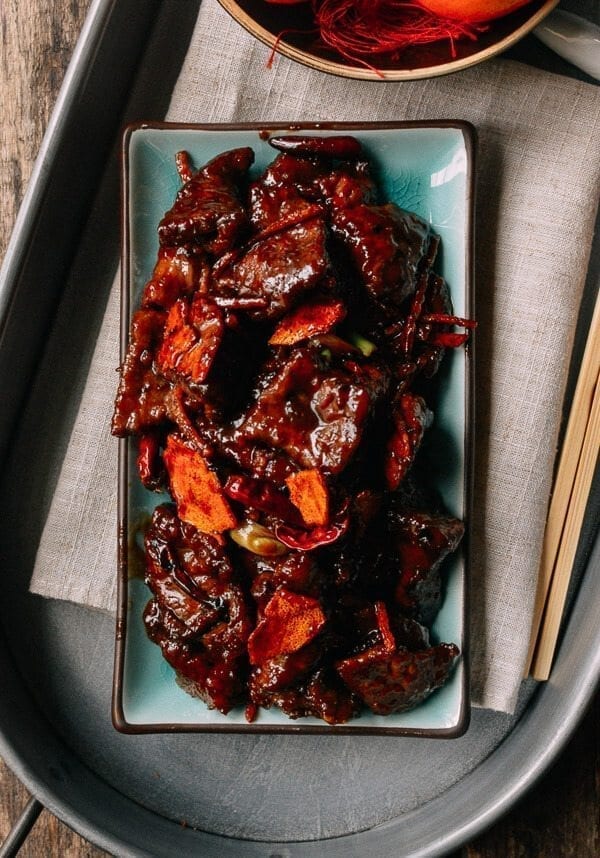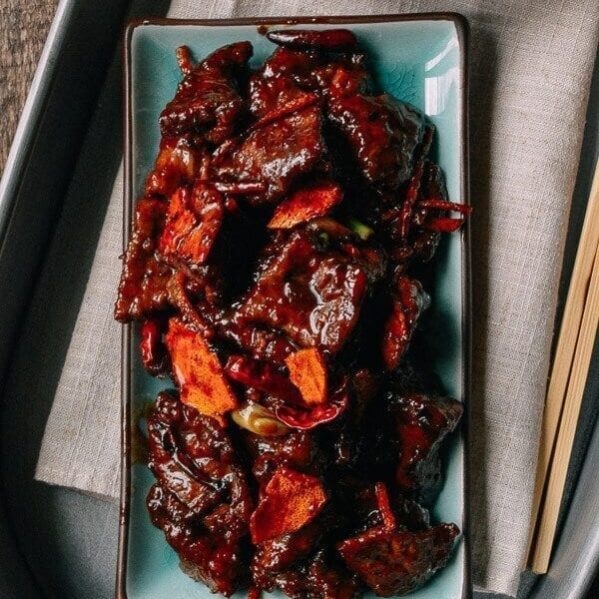It was never a regular in my family’s daily rotation, as we generally ate Cantonese and Hong Kong-style cooking. So my first experience with Tangerine Beef started at the Chinese restaurant my parents and my aunt and uncle started in New Jersey over 30 years ago! A guest requested tangerine beef by the Chinese name (pronounced “chun pi niu” in Mandarin), even though it wasn’t on the menu. I had heard of the name, but had no idea what it looked or tasted like. When I went into the kitchen to request it, my uncle smiled and said he could make this chun pi niu specialty dish for our guest. It took a while to prepare, but the guest was delighted when he tasted it. I was quite delighted myself after I nicked a small piece of beef before bringing it out–I mean, I had to make sure it was okay, right? The Tangerine beef dish has a deep, rich color and the overall taste was savory and sweet. The beef was deliciously chewy from being fried (similar to our Mongolian Beef recipe), and of course, the subtly bitter, yet bright tangerine flavors were definitely the highlight! The key to a good plate of tangerine beef is the aromatic dried tangerine peels, as well as the candied slivers of tangerine peel that you should have with every bite of beef.
Tangerines symbolize auspiciousness, as the word for “orange” sounds like the word for success in Chinese, and the word for “tangerine” sounds like the word for luck. That’s why you will see oranges, tangerines and citrus everywhere during Chinese New Year. If you didn’t know already, phonetics and language are a huge factor when it comes to Chinese superstitions and traditions. This year, we add this dish to our growing collection of Chinese New Year recipes. Hope you enjoy this one and have a happy, healthy, and prosperous New Year!
Tangerine Beef: Recipe Instructions
Marinate the beef for 1 hour in 1 teaspoon oil and 1 tablespoon of cornstarch and set aside. Lightly scrub the tangerines with a vegetable brush under running water to remove wax and/or pesticides and towel dry. Peel the tangerines (reserving the peels) and squeeze 1/3 cup juice from the fruit. Scrape as much of the white pith from the peels as you can, until you see just the skin ( I used a serrated steak knife), and julienne the peels into thin slivers. Set aside along with the juice. Then make a simple syrup by dissolving 1 tablespoon of sugar into 1 tablespoon of hot water.
In the picture above on the top left are store-bought tangerine or mandarin orange peels that have darkened over time. If you cannot find the store bought peels, you can dry your own, which is what I did for the brighter colored peels just to the right of the store-bought darker ones. These peels were left to dry for about 4 weeks and can be stored in a glass jar or zip lock bags after they have been dried. They will keep until the next season (about a year) when you can dry more. Be sure to scrape away the pith like I did at the bottom even when drying peels for the longer term.
Heat a saucepan or wok over low heat and add 1 teaspoon of oil and the tangerine peel slivers.
Lightly toast the peels by tossing in the oil for about 30 seconds, and add the simple syrup. Continuing stirring the peels until the simple syrup evaporates and clings to the peels. Transfer the candied peels to a bowl along with any infused oil, and set aside.
Dredge the pieces of meat individually in the remaining ¼ cup of cornstarch until lightly coated, and heat 1/3 cup oil in a clean wok over high heat. Just before the oil starts to smoke, spread the flank steak pieces evenly in the wok, and let sear for 1 minute.
Flip the steak over and let the other side sear for another 30 seconds. Transfer to a sheet pan, and tilt it slightly to let the oil drain to one side (lean it on a cookbook or cutting board). The beef should be seared with a nice crusty coating.
Drain the oil from the wok, leaving about 1 tablespoon behind, and turn the heat to medium-high. Add the ginger, star anise or five spice powder, dried tangerine or mandarin orange peels and dried red chili peppers, if using. (We have a whole star anise pictured in our photos, but the recipe calls for only one pod (8 pods make up a whole star anise). After tasting the finished product, we felt that a whole star anise may have been too overwhelming for the dish.)
After about 15 seconds, add the garlic. Stir for another 10 seconds, and add the light soy sauce, tangerine juice and brown sugar. Bring the sauce to a simmer, stirring occasionally. Let the sauce simmer for about 2 minutes and slowly stir in the cornstarch and water slurry mixture–until the sauce coats the back of a spoon. Add the beef, candied tangerine slivers with the infused oil, and the scallions. Toss everything for another 30 seconds until all of the beef is well-coated.
There should be almost no liquid, as the sauce should be clinging to the beef. If you still have too much sauce, increase the heat slightly and stir-fry until thickened. If the sauce is too thick, add a little bit of hot water to thin it out. Serve hot, and remind your dining companions that the tangerine peels eaten with the beef really make this dish!
